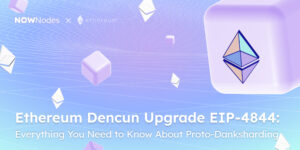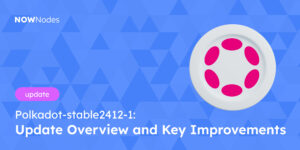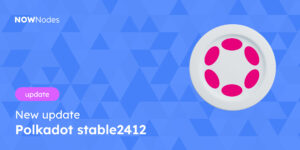Polkadot has entered a new era. With the recent migration to the Polkadot Asset Hub, the network has redefined how assets are created, managed, and transferred across its ecosystem.
This move isn’t just a technical adjustment — it’s a fundamental shift in how Polkadot handles tokens, NFTs, and cross-chain interoperability.
Infrastructure providers such as NOWNodes have already integrated support for the upgraded Asset Hub Polkadot, making it accessible for developers and users worldwide. Let’s explore what it is, why the migration matters, and what it means for the future of the Polkadot ecosystem.
What Is Polkadot Asset Hub?
The Polkadot Asset Hub is a system parachain — a dedicated blockchain in the Polkadot network designed for issuing and managing assets.
Previously called Statemint, it gives users a simple way to create fungible or non-fungible tokens in a low-cost, efficient environment.
While the Relay Chain handles security and consensus, the Asset Hub focuses on managing on-chain assets.
This separation allows Polkadot to scale better while keeping fees and deposits low for asset creators and users.
In essence, the Asset Hub Polkadot acts as the backbone for all tokenized assets within the ecosystem, offering developers a simple yet powerful way to build on top of Polkadot’s interoperable infrastructure.
Why the Migration Was Necessary
The Polkadot Asset Hub migration consolidated all asset-related functionality into one dedicated chain.
Previously, asset operations were distributed or dependent on the Relay Chain, which made the process more expensive and less flexible.
By moving assets to the Hub, Polkadot achieved several crucial improvements:
- Transactions became faster and cheaper.
- The network reduced congestion on the Relay Chain.
- Developers gained a unified and standardized environment for issuing and managing tokens.
This migration also improved cross-chain compatibility. Through XCM (Cross-Consensus Messaging), assets on the Hub can now move freely between parachains, opening the door to new forms of decentralized finance, gaming, and digital identity applications.
How It Works: Core Principles of the Asset Hub
At the heart of the Asset Hub are a few key concepts.
First, there’s the idea of sufficient and non-sufficient assets.
A non-sufficient asset requires users to hold a minimal amount of DOT (the existential deposit, about 0.01 DOT) for their account to remain active.
On the other hand, users can receive and hold a sufficient asset even if they don’t own any DOT — an important step toward lowering the entry barrier for newcomers.
Every asset created on the Hub carries a unique Asset ID, which guarantees its authenticity.Because anyone can name their token freely, users should always verify the Asset ID through trusted tools like the Polkadot Asset Hub Explorer before interacting with it.
The Impact on Developers and Infrastructure
For developers and infrastructure providers, the migration represents a major opportunity.
With asset logic now isolated on a dedicated chain, integrating token functionality into applications becomes much easier.
NOWNodes already support RPC endpoints for the Asset Hub Polkadot, enabling developers to connect instantly, query data, and interact with tokens via standard APIs.
This shift simplifies workflows for wallets, exchanges, and DeFi platforms, while reducing costs for both users and service providers.
Looking Ahead: The Future of Polkadot Assets
The Polkadot Asset Hub is still evolving. Future updates will introduce smart contract functionality, enabling developers to deploy programmable assets and build more advanced token use cases directly on the Hub.
The Hub will play a critical role in bridging assets across parachains and external networks, ensuring smooth interoperability across Web3.
Keeping an eye on Polkadot Asset Hub news will be essential for anyone building in the ecosystem. The next phase of this infrastructure will likely define how assets are managed in the decentralized world.
Conclusion
The Polkadot Asset Hub is more than just an upgrade — it’s a foundation for the next generation of decentralized asset management.
If you’re building on Polkadot, now is the time to connect to the updated infrastructure.
With RPC access provided by NOWNodes, joining the Asset Hub Polkadot has never been easier.



